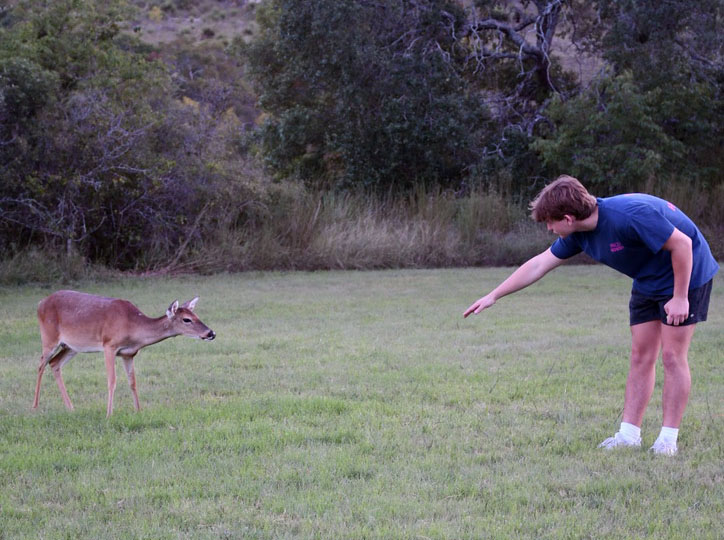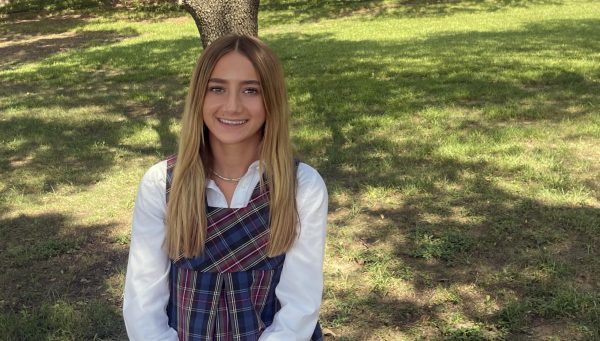What would the land of Selah look like if not for J. David Bamberger?
This is what the students of the AP Environmental Science class learned on their most recent excursion to the Texas Hill Country. These students returned for the eleventh year to Mr. Bamberger’s toiled-over project in Blanco County.
In 1969, after his success as an entrepreneur as the founder of Church’s Chicken, Bamberger returned to his passion of conservation.
“He became a multimillionaire, and he went searching for the worst piece of property in Texas so that he could use his love for nature and his mother to restore it,” Sherri Reed, FWCD Environmental Science teacher said.
Reed discovered Bamberger Ranch through a group called Texas Masters Naturalists, whom she joined for a tour. What she found most fascinating, she said, was Bamberger himself and the lessons that aligned with her AP Environmental Science curriculums. She found the trip is a common thread for her to weave and refer back to throughout her year of instruction.
“It’s like, ‘Oh, remember when we were on the ranch and we went out to the bat cave and talked about the ecosystem?’,’” Reed said.
The bat cave has proven to be one of the favorite aspects of the ranch for Fort Worth Country Day students. This installation in the ranch was built by Bamberger himself.
“He sort of, in essence, built an upside down swimming pool, and covered it with concrete and dirt to create a big series of caves,” Upper School biology and physics teacher, Stephen Dickey, said. It now inhabits half a million bats.
This is one of the many features that fascinates both teachers and students alike on their visit. Not only did Bamberger aid the bat population, he also increased the bird species’ inhabitants from around 50 to now over 200.
“There is a lot of different biodiversity on the ranch… so that many habitats can take home in it and establish their own ‘niches’, which I thought was really cool,” Anna Schwartz ’26 said.
The way in which all of this came to be was very strategic. According to the Ranch’s website, bambergerranch.org, “For nearly 50 years the 5,500 acre ranch has become one of the largest habitat restoration projects in the state, winning numerous awards,”. This project encompasses all aspects of nature from soil to water and to fish to fawn.
Bamberger, who is now 97, grew from student to expert of his land. He wanted to extend this experience to everyone, from the 2,000 students that visit in a typical school year to scientists, landowners, and researchers.
“[Bamberger] was very knowledgeable and passionate about his job, and he showed us around his rock garden. He was just very thankful for his land,” AP science student Adelaide Butler ’26 said.
Butler described their experience as being a great one as students had the opportunity to stay in air conditioned cabins and cook with one another, likening it to a camp trip. Bamberger even invited the group to his own ranch home, which boasts indigenous artifacts like arrowheads, and rocks like onyx, all of which he found on the property.
“His goal,” Dickey said of Bamberger, “was to build a ranch to function as an educational center, to teach how to protect and restore the environment.”
Dickey used the example of water quality testing to describe how the land of Selah takes environmental studies out of the classroom and into nature.
Both Schwartz and Butler mentioned how the bonds they had with fellow seniors enhanced throughout the trip. They spoke of playing board games and cards, through the benefit of disconnecting due to very little cell service available at the ranch.
“I got pretty sentimental because it’s all of our senior year and we were able to just unplug, and enjoy being outside and close to each other,” Butler said.
Faculty and students remarked on the food that the students helped make together. One night in particular, a group of senior boys cooked buttered chicken that many enjoyed. This experience created an indelible memory that is sure to stick with them all.
Bamberger created this ranch primarily as a facet of his passions that later grew into something much larger. This land has proven to be a place of comfort and education for all who visit. The property which was named after the Hebrew word Selah meaning, “to pause and reflect,” embodies this value completely.





